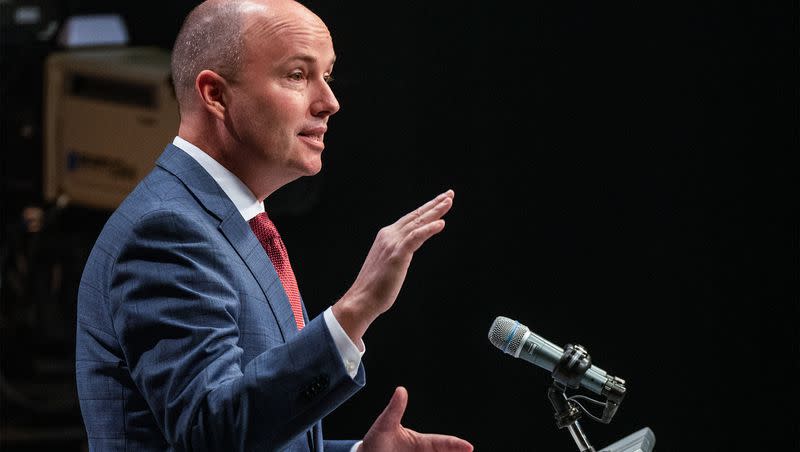Gov. Cox says Utah’s ability to create economic mobility is important to him

In a press conference held earlier this month, Gov. Spencer Cox once again praised Utah for its high rate of social capital and upward mobility.
“We lead the nation again. A new report just came out yesterday or the day before that I saw around social capital and upward mobility,” Cox said. “Utah was No. 1 again.”
The report showed that, in Utah, “if you’re born in poverty, you don’t have to stay in poverty,” he said, adding that this is important to him.
A recent report from the Archbridge Institute found that Utah had the best environment for social mobility. The report graded all 50 states on several different areas, like community activities and neighbors, education quality and freedom, judicial system quality, regulation and business dynamism.
The report defines social mobility as not only “a person’s ability to climb the income ladder and outearn the previous generation,” but it additionally states that “social mobility is also concerned with achievement, aspirations, purpose and skills development.”
An environment supportive of social mobility means community members have favorable conditions to be upwardly mobile. In addition to Utah scoring No. 1 for social mobility, states in the Mountain West had some of the highest average scores overall.
One aspect that contributed to Utah’s high ranking mentioned by the report authors was the state’s “one-stop-shop for welfare services.”
“Utah ranks first overall in the 2023 Social Mobility Index, the best in the nation,” the report stated. “Utah performs well in several key areas including business dynamism (second), parent engagement and stability (third), and charity (sixth). However, Utah could further support social mobility by addressing its lower scores for education quality and freedom (29th) and predatory state action (27th), both of which rank in the bottom half of the nation.”
Education quality and freedom was measured in the study by National Assessment of Education Programs test scores from fourth and eighth grade, school choice, university quality and community college graduation rates. Predatory state actions were determined by looking at the amount of fines and fees local governments collect, corruption perceptions and civil asset forfeiture.
For years, Utah has been recognized as a place that’s upwardly mobile.
Related
A 2014 article in The Atlantic pointed toward two strengths that Salt Lake City has that make it a positive environment for upward mobility: “A strong middle class and a less extreme gap between the rich and the poor.”
“Low-income kids who grew up in the region, the researchers found, had some of the greatest chances of moving up the income ladder as they aged,” The Atlantic reported.
Based on data from 2020 to 2022, the Gini Index from the U.S. Census Bureau ranks Utah as having one of the lowest economic inequality scores across the country. The Gini Index measures concentration of wealth — the lower the score, the more equally wealth is found across the population.
Utah is ranked as a financially healthy state across other metrics, too. In 2018, the Mercatus Center at George Mason University ranked Utah eighth in the country for fiscal health. Utah has the highest social capital rate, according to a report from the Joint Economic Committee, also ranking No. 1 for family unity, social support and philanthropic health.
The Beehive State also has a robust middle class.
“The good news is, Utah has a remarkably strong middle class. By the latest numbers, Utah’s middle-class households stand at 54% of the total. That’s well ahead of the national average of 47%. It’s also ahead of every other state. And the second- and third-place states are our neighbors, Wyoming and Idaho, at 52%,” Peter Reichard wrote.

